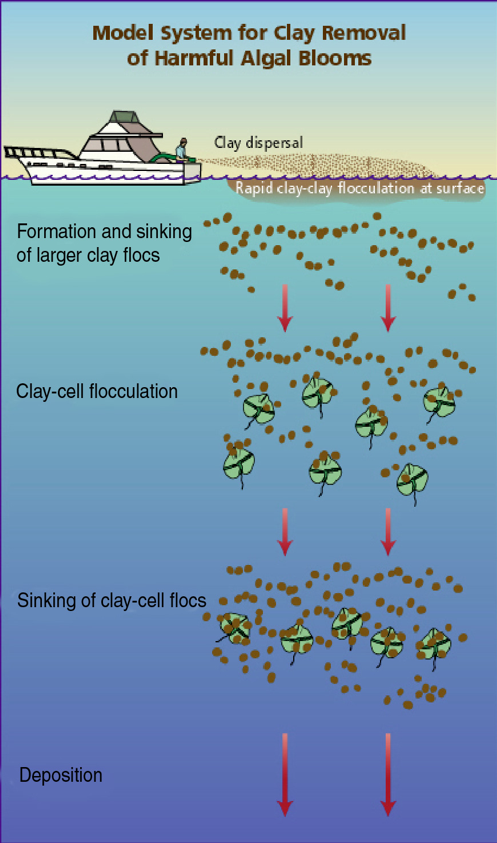Control and Treatment
There is a general consensus that prevention is the preferred management strategy for HABs, but this management strategy can be difficult to implement, and there are presently few active efforts aimed at directly preventing blooms. A growing field of research is focused on methods and technologies to control or suppress blooms. These approaches include strategies that kill HAB organisms or limit growth, and/or physically remove cells and toxins from the water column. Bloom control or suppression activities can be controversial, however, due to concerns regarding unintended ecosystem impacts of these controls. Most mitigation studies fall under four broadly defined categories, summarized below. In practice, perhaps the best known involves physical or mechanical control (e.g., flocculation), but in addition to mechanical control, there are several other categories or strategies that theoretically could be used to control or suppress HABs and their toxins.
Additional Resources
- Kidwell, D.M., 2015. Programmatic Environmental Assessment for the Prevention, Control, and Mitigation of Harmful Algal Blooms Program, NOAA NOS, 87pp.
- Anderson, D.M., 2004. Prevention, control and mitigation of harmful algal blooms: multiple approaches to HAB management. Harmful Algae Management and Mitigation, pp.123-130.
- Gustafsson, S., Hultberg, M., Figueroa, R.I. and Rengefors, K., 2009. On the control of HAB species using low biosurfactant concentrations. Harmful Algae, 8(6), pp.857-863

